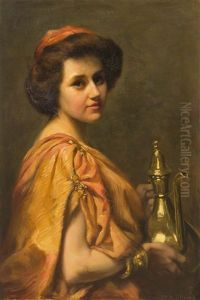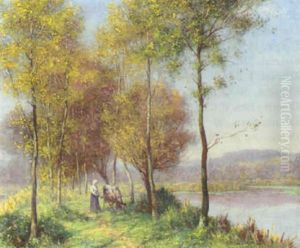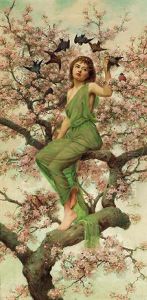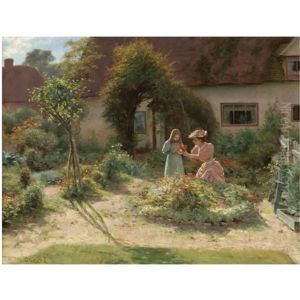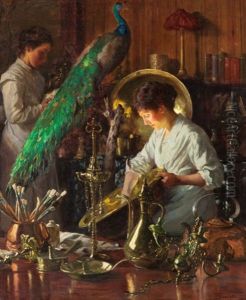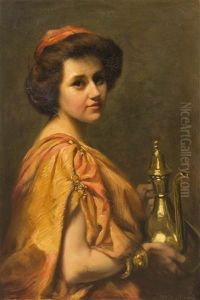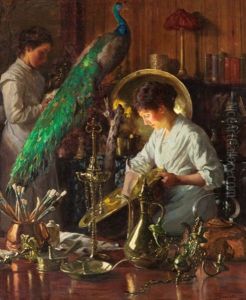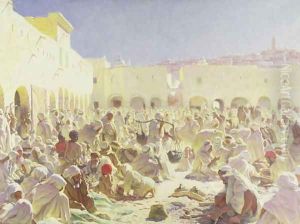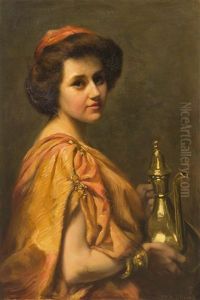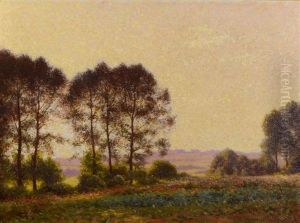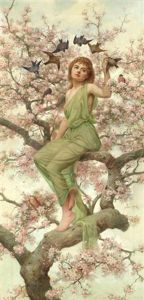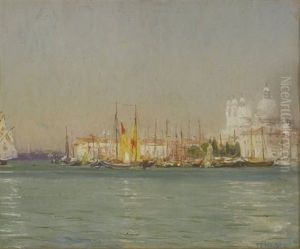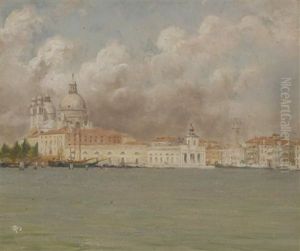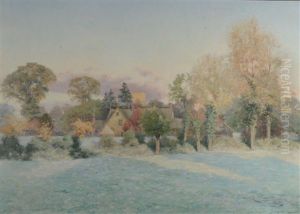Thomas Frederick Mason Sheard Paintings
Thomas Frederick Mason Sheard, often known just as T.F.M. Sheard, was a British artist born in 1866 in Huddersfield, West Yorkshire, England. He was known primarily for his landscape and genre paintings. His work is characterized by a meticulous attention to detail and a penchant for capturing the atmospheric and lighting conditions of the scenes he depicted, which often featured rural settings and coastal scenes.
Sheard studied art at the Huddersfield School of Art before furthering his education in art at the prestigious Royal College of Art in London. His training provided him with a solid foundation in the technical aspects of painting, which he applied to his work throughout his career. His education during the late Victorian period meant that he was exposed to a variety of artistic influences, including the Arts and Crafts movement and the lingering effects of Pre-Raphaelitism.
Throughout his career, Sheard exhibited his work at various venues, including the Royal Academy and the Royal Society of British Artists. His exhibitions helped to establish his reputation as a skilled painter. Despite this, Sheard did not rise to the same level of fame as some of his contemporaries. As a result, his work is less well-known today, though it is appreciated by collectors and historians who specialize in Victorian and Edwardian art.
Sheard's paintings often reflect a sense of nostalgia and a romanticized view of the English countryside, typical of certain strands of British art in the late 19th and early 20th centuries. His compositions frequently include figures set within the landscape, sometimes suggesting a narrative or a moment in time captured within the natural environment.
T.F.M. Sheard's life and career were cut short when he died in 1921. Though he did not leave behind a large body of work, his paintings continue to be appreciated for their charm and technical proficiency. In the years following his death, tastes in art shifted dramatically with the advent of modernism and abstraction, which may have contributed to Sheard's relative obscurity in the broader narrative of art history. Nonetheless, within the context of British landscape and genre painting of his era, Sheard's contributions remain a testament to the skills and sensibilities of late Victorian and Edwardian artists.
